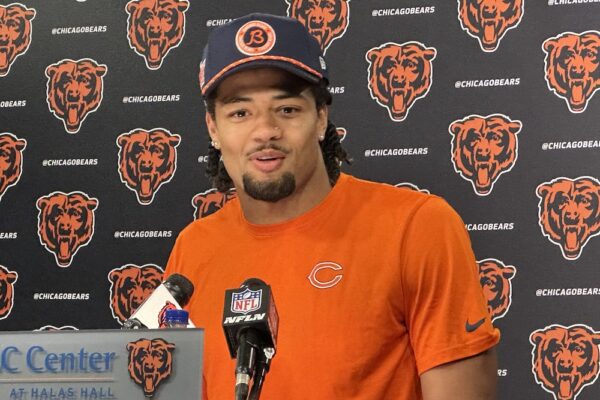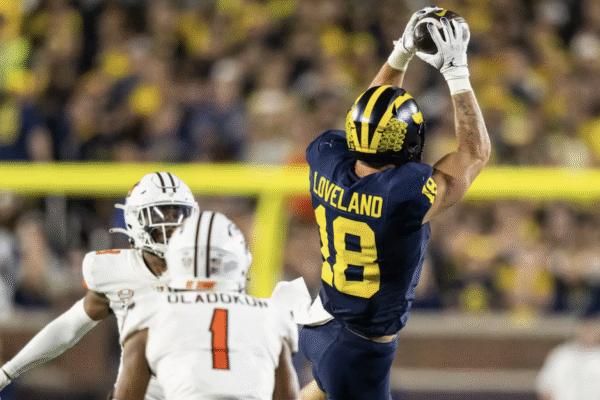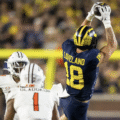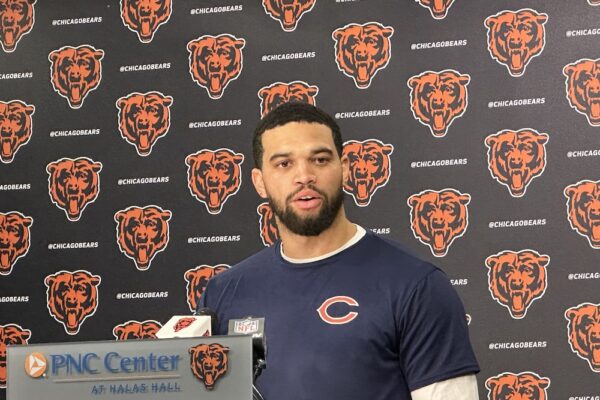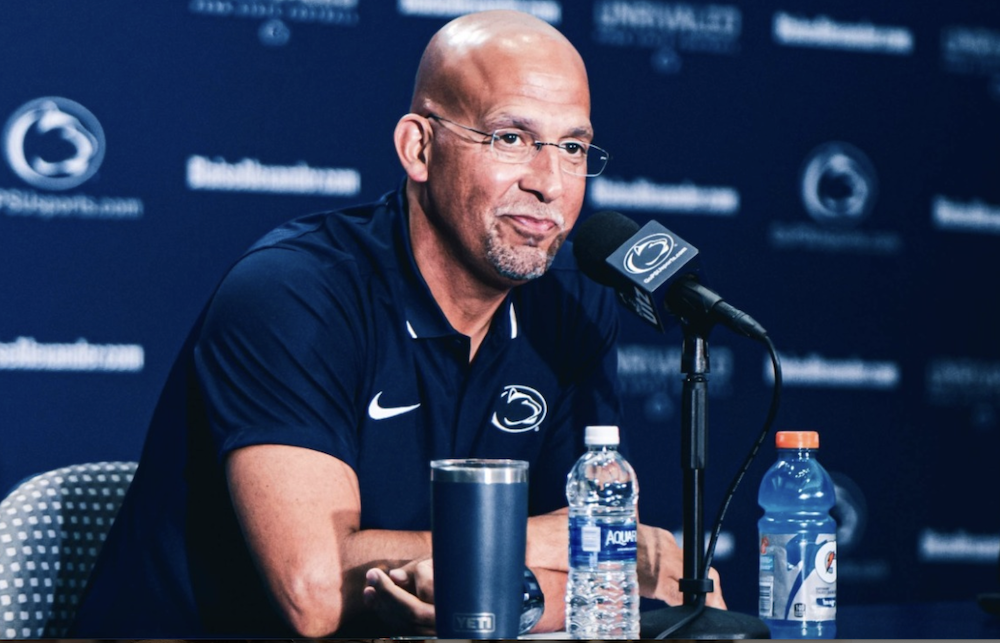
PSU head coach James Franklin had some interesting comments on Washington and Oregon joining the Big Ten.
At his Saturday press conference, Franklin was asked about the latest developments in the conference reshuffling.

Q. A few days ago, the news that Oregon and Washington will be joining the Big Ten. What are your initial reactions to that and your thoughts on that in the future?
A: I had some conversations. It’s really cool that our president, Dr. [Neeli] Bendapudi, picks up the phone and calls me and includes me in those conversations and those discussions and Pat Kraft, as well. I’m very appreciative of that and don’t take that for granted.
I will say that my focus, and obviously this press conference, is about specifically our football team and getting ready for West Virginia and getting ready for the Big Ten Conference. I do think, obviously, with what you see that’s going on in college football right now, it’s not shocking that these things are kind of happening. It’s somewhat sad in some ways, not that these people are being added to our conference because I think obviously there’s a lot of strategy that goes into that.
But you know, I do think there’s some challenges that come along with it and it’s just very different for most of the people in this room, it’s very different than the college football that we all grew up with, not really college football, college athletics, where at least for most of the year it was pretty regional.
I do think it’s a huge win for USC and UCLA from a travel perspective. I think it’s a huge win for them.
Q. As far as year 10 goes, conference realignments, one of the changes, but the game itself, you’ve seen so many unprecedented changes in the game: Transfer portal, NIL, conference realignment, expanded playoff format, overtime rules. What were easy ones to predict? What are you surprised at? How has it affected your day-to-day operations with the way you do your job from when you started to now?
A: Yeah, it’s been dramatic, and I don’t know if COVID has played a part in it as well, but it seems like since COVID, it’s sped everything up.
But the last five years, I think you guys have heard me say this before, there’s probably been more changes in the last five years than the previous 50 and I don’t think it’s close. I think the game and the rules were the same for probably at least 50 years. And now in the last five, there’s been changes and dramatic changes.
I would make the argument. I think we could sit here and have a pretty interesting debate that some of the changes were needed. I would also say in defending the NCAA, that nobody seems to be doing any more, I think people see once they try to get in involved in it, that a lot of these decisions and a lot of these changes and a lot of these rules are much more sophisticated than people think and much more challenging than people think because they cross over into a lot of different worlds.
But I guess this would probably be the best way to describe it from my lens and my perspective is the transfer portal. I think it’s like the pendulum, right. I think the pendulum has overcorrected but I would say, there was a problem. Should head coaches have been able to have the power to deny kids from transferring to ten different schools. They shouldn’t have been able to do that. That was not right. That was unfair.
To be honest with you, there was really only a handful of people that abused it, and that’s probably the same way in any industry, right. There’s a few people, maybe 5 percent that abuse the rules. Well, now that happens and now a rule has to be put in place to correct for that.
I think that’s really what happened. Instead of maybe allowing coaches, I think it would have been much better to have the conferences and the commissioners come up with a standard rule, whatever it may be, five schools, or you can’t transfer within your conference or whatever. But there were people saying anybody on our schedule, five years out, like it just was too much.
I also don’t think that just complete open transferring is good, and it’s funny, because I think when a lot of people say things like this, it comes off as being anti-student athlete. And that’s completely the opposite when it comes to me. But again, I still believe in the student-athlete model, and I still believe that the No. 1 thing we should be doing is educating.
When I talk about that, what I mean by that is, when you look at graduation rates, the data is very strong that every time you transfer, the likelihood of graduating goes down because you lose credits. I think that’s a perfect example of what I’m talking about. It’s a much more sophisticated issue.
Do I think the players should have options and choices? Yes. Do I think the coaches should have been able to restrict student athletes from transferring anywhere that the coach didn’t want them to transfer to? No. But I think we could have gotten to more of a middle ground rather than from one extreme to where we are now.
Then if you take education out of it, you know, just the ability for college athletics and specifically football, to teach people how to overcome adversity.
Then you go to the other end of the spectrum, you come up with rules and guardrails. Well, then the lawyers know what the rules and the guardrails are, so then they use them to create an exception for every kid.
So you know, in my defense of the NCAA and the model, to a degree, the problems and the challenges are more sophisticated than I think people realize. I think one of the best things that we can do is get all the commissioners in the room, in the same room at the same time, and try to do what’s best for college athletics as a whole, because they are the most powerful people in college athletics, in my opinion.
Microsoft Word – 8-6-23 Head Coach James Franklin Media Day.docx
Q. As far as year 10 goes, conference realignments, one of the changes, but the game itself, you’ve seen so many unprecedented changes in the game: Transfer portal, NIL, conference realignment, expanded playoff format, overtime rules. What were easy ones to predict? What are you surprised at? How has it affected your day-to-day operations with the way you do your job from when you started to now?
A: Yeah, it’s been dramatic, and I don’t know if COVID has played a part in it as well, but it seems like since COVID, it’s sped everything up.
But the last five years, I think you guys have heard me say this before, there’s probably been more changes in the last five years than the previous 50 and I don’t think it’s close. I think the game and the rules were the same for probably at least 50 years. And now in the last five, there’s been changes and dramatic changes.
I would make the argument. I think we could sit here and have a pretty interesting debate that some of the changes were needed. I would also say in defending the NCAA, that nobody seems to be doing any more, I think people see once they try to get in involved in it, that a lot of these decisions and a lot of these changes and a lot of these rules are much more sophisticated than people think and much more challenging than people think because they cross over into a lot of different worlds.
But I guess this would probably be the best way to describe it from my lens and my perspective is the transfer portal. I think it’s like the pendulum, right. I think the pendulum has overcorrected but I would say, there was a problem. Should head coaches have been able to have the power to deny kids from transferring to ten different schools. They shouldn’t have been able to do that. That was not right. That was unfair.
To be honest with you, there was really only a handful of people that abused it, and that’s probably the same way in any industry, right. There’s a few people, maybe 5 percent that abuse the rules. Well, now that happens and now a rule has to be put in place to correct for that.
I think that’s really what happened. Instead of maybe allowing coaches, I think it would have been much better to have the conferences and the commissioners come up with a standard rule, whatever it may be, five schools, or you can’t transfer within your conference or whatever. But there were people saying anybody on our schedule, five years out, like it just was too much.
I also don’t think that just complete open transferring is good, and it’s funny, because I think when a lot of people say things like this, it comes off as being anti-student athlete. And that’s completely the opposite when it comes to me. But again, I still believe in the student-athlete model, and I still believe that the No. 1 thing we should be doing is educating.
When I talk about that, what I mean by that is, when you look at graduation rates, the data is very strong that every time you transfer, the likelihood of graduating goes down because you lose credits. I think that’s a perfect example of what I’m talking about. It’s a much more sophisticated issue.
Do I think the players should have options and choices? Yes. Do I think the coaches should have been able to restrict student athletes from transferring anywhere that the coach didn’t want them to transfer to? No. But I think we could have gotten to more of a middle ground rather than from one extreme to where we are now.
Then if you take education out of it, you know, just the ability for college athletics and specifically football, to teach people how to overcome adversity.
Then you go to the other end of the spectrum, you come up with rules and guardrails. Well, then the lawyers know what the rules and the guardrails are, so then they use them to create an exception for every kid.
So you know, in my defense of the NCAA and the model, to a degree, the problems and the challenges are more sophisticated than I think people realize. I think one of the best things that we can do is get all the commissioners in the room, in the same room at the same time, and try to do what’s best for college athletics as a whole, because they are the most powerful people in college athletics, in my opinion.
source: Penn State Sports Information.



